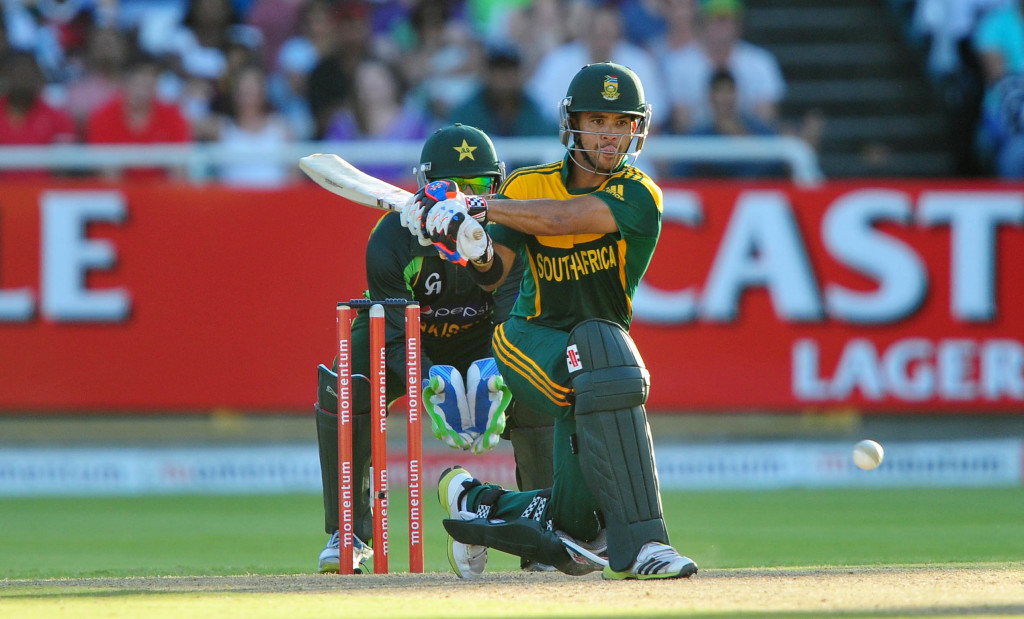Every armchair critic is a national selector – and each one of them has been right since before the start of the World Cup.
It’s too late now for the actual South African selectors to do anything about it, and it’s pointless for all us observers not intimately involved at the tournament itself to keep banging on about it, but it is worth highlighting what we have known all along. Because it’s as if the selectors and captain don’t have an answer to it.
Yes, we knew the No7 position and the fifth bowler were the biggest headaches. We saw that in the Tri-series in Zimbabwe, which South Africa won, but which masked over the cracks.
You know the storyline: Farhaan Behardien and Wayne Parnell were included in the Proteas 15 but both have been shown up at international level, before and during the World Cup. So, effectively, we had a squad of 13 sent to win the World Cup. Actually, make that 12, because Aaron Phangiso has only been given some substitute fielding to do.
And of those 12, Vernon Philander has missed three of the five games and we’re one match away from a potential semi-final with Sri Lanka.
The harsh reality is that without the tournament’s top run-scorer, AB de Villiers, South Africa would have looked fairly ordinary. Which they have in two defeats, to India and Pakistan, where 232 was beyond them in Auckland. Against India, even 200 was a bridge too far.
It’s been such a Jekyll ‘n Hyde campaign. They have looked unstoppable batting first over the last two years, barnstorming their way to 400-plus totals, but chasing they have capitulated against India and Pakistan. These are two teams who South Africa would have expected to beat in a southern hemisphere World Cup, but they have lost both.
De Villiers has been supreme, as if his batting is on a different planet, but he can’t be expected to come to the party each time his country plays. Others have stuck up their hands, like Hashim Amla and Faf du Plessis, but Quinton de Kock has been nowhere with the bat. Rilee Rossouw has played two knocks of some importance, and David Miller and JP Duminy’s finest moment came against Zimbabwe in the opener.
It’s worth noting that both haven’t scored ODI hundreds against anyone other than Zimbabwe and the West Indies, and both countries are several rungs below the level of Australia, New Zealand and India and even Sri Lanka for that matter.
While Miller got out lbw to a very good yorker against Pakistan, Duminy again perished to a poor shot. Like he did against India when he tried a pre-meditated reverse sweep. Against Pakistan he got a top edge hooking a short ball and you could see that he knew he had let the side down.
There was never a need to panic in Auckland, because the asking rate was always within reach. What South Africa ‘simply’ needed to do was adopt a Test cricket mindset. They got themselves to 67-1 within the first 10-over powerplay. And then they imploded.
Sure, Pakistan’s bowling attack rolled up. They used five bowlers and their fifth bowler took 3 for 45 off 7.3 overs. South Africa’s fifth bowler – De Villiers and Duminy – took 1-77 off their combined nine overs.
That was a difference of 32 runs between the two fifth bowlers. Pakistan won by 29 runs. A co-incidence? Definitely not.
South Africa’s No7 against Pakistan was Duminy. He made 12. Pakistan’s No7 was Shahid Afridi. He made 22. Another 10 runs difference there. In the context of a low-scoring match those runs were huge and the difference between winning and losing.
So, in those two snapshots we again highlight where South Africa’s problems remain. And that’s without even beginning to ask why they are trapped like a rabbit in headlights when asked to chase a total to win a match.







